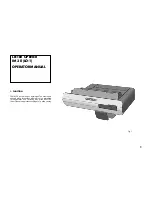
Sweat Size
Size
All sizes
7/8 (22.0)
3/8 (9.5)
1-1/8” adapter.
1.
against the piping plate and around the piping stubs,
and sweat in the suction line. The heat shield must be
in place to guard against heat damage to the paint.
2. Slide the liquid line compression nut onto the provided
the liquid line stub for brazing.
3. Braze liquid line and coil connections. Use a silver
alloy brazing rod (5 or 6 percent silver alloy for copper-
to-copper connections or 45 percent silver alloy for
copper-to-brass or copper-to-steel connections).
4. Remove the heat shield after brazing and allow the
connections to cool.
5. Select the appropriate refrigerant metering device:
check/expansion valve.
thermal expansion valve. Refer to either the outdoor unit
installation instruction, product catalog or price book for
approved metering device.
ORIFICE OR
CHECK/EXPANSION
VALVE
O-RING
SUCTION LINE
ORIFICE
HOUSING
STRAINER
DISTRIBUTOR
TUBES
LIQUID LINE
STUB
SENSING
BULB
O-RING
NYLON SEAT
1.
pointing toward the distributor (see Figure 3).
2. Apply a small amount of refrigerant oil on the O-ring
3.
The suction line service port has no core. Make sure
that the service port cap is tightened securely.
4.
Insulate the refrigerant lines at the connections to
prevent sweating.
of the suction line and seal cabinet opening.
All piping, metering devices and connections must
be insulated to prevent moisture damage caused by
sweating.
To install the check/thermal expansion valve:
1.
housing (see Figure 3).
2. Apply a small amount of refrigerant oil on the O-ring
(shipped with the valve assembly) and place it securely
3.
4. Screw the liquid line compression nut (with the liquid
line) on the threaded end of the expansion valve.
5. Install the expansion valve equalizer line on the suction
line service port.
tightened securely.
6. Use the clamp provided with the valve assembly to
secure the sensing bulb to the suction line.
The sensing bulb must be positioned as shown in Figure
3 to ensure proper valve operation.
All piping, metering devices, and connections must
be insulated to prevent moisture damage caused by
sweating. If the equipment is not properly insulated,
moisture could damage other equipment.
Slide insulation up to the cabinet to cover all
Page 7
mrcool.com
































